#ScienceCommunicator
Explore tagged Tumblr posts
Text
“Extraordinary claims require extraordinary evidence.”

Carl Edward Sagan was an American astronomer, planetary scientist, and science communicator. His best-known scientific contribution is his research on the possibility of extraterrestrial life, including the experimental demonstration of the production of amino acids from basic chemicals by exposure to light.
Born: 9 November 1934, Brooklyn, New York, United States
Died: 20 December 1996 (age 62 years), Fred Hutch Cancer Center, Seattle, Washington, United States.
Popularised Science Through “Cosmos” Sagan co-wrote and hosted Cosmos: A Personal Voyage (1980), a groundbreaking TV series that brought astronomy and the wonder of the universe into millions of homes. It became one of the most-watched PBS series in history.
Worked on NASA Missions He played a major role in several NASA missions, including the Mariner, Viking, Voyager, and Galileo programs. He helped design messages for extraterrestrial life, like the Golden Record aboard Voyager.
Pioneer of Planetary Science Sagan was instrumental in explaining the greenhouse effect on Venus, the seasonal changes on Mars, and the nature of Saturn's moon Titan. He essentially helped define planetary science as a field.
Wrote the Novel Contact His 1985 science-fiction novel Contact (later made into a film starring Jodie Foster in 1997) tackled the philosophical and scientific implications of contact with extraterrestrial life.
Advocated Against Nuclear Weapons Sagan warned about “nuclear winter”—the potential climate effects of widespread nuclear war. He used his platform to push for nuclear disarmament during the Cold War, blending science with social responsibility.
#CarlSagan#Cosmos#ScienceCommunicator#PaleBlueDot#Astrophysics#AstronomyLegend#PlanetaryScience#NASAContributor#GoldenRecord#VoyagerMissions#CosmicPerspective#Humanist#Skepticism#NuclearDisarmament#ScientificWonder#ContactTheNovel#StarStuff#SecularHumanism#EducatorExtraordinaire#VoiceOfTheCosmos#quoteoftheday#new blog#today on tumblr
0 notes
Text



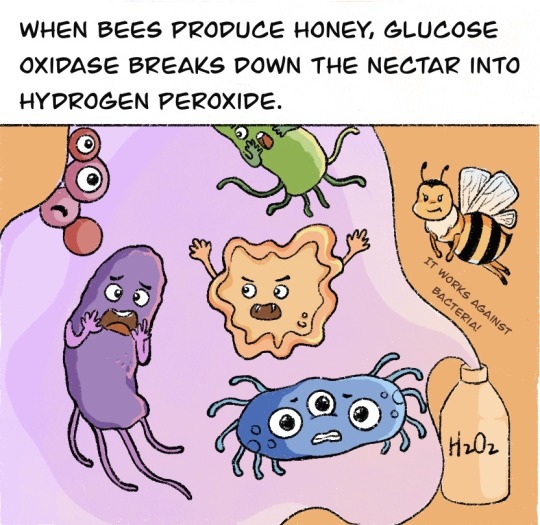
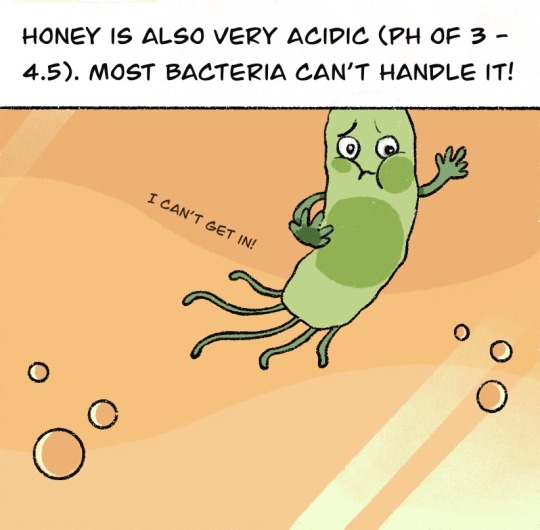
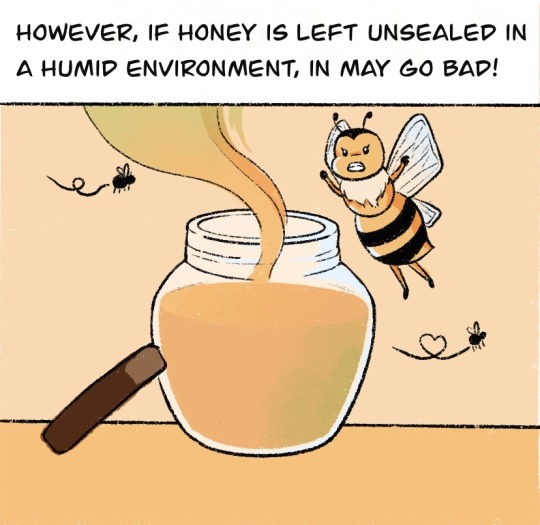

Do you know that a 3000-year-old honey was still edible? Does honey ever spoil?
#sciart#cute illustration#studyblr#sciencecommunication#biochemistry#stem education#chemistry#science#chemistry in real life#biology#food science#comics#cute comics
812 notes
·
View notes
Text
The Beauty of Glowing Chemistry
There’s something fascinating about watching chemistry come to life—literally. Reactions that produce light, like chemiluminescence and bioluminescence, remind us that science isn't just useful—it's beautiful. ✨ These luminous reactions spark wonder and curiosity. Who knew that molecules dancing together could create such magic? 💡 Which glowing reaction has fascinated you the most?
#Chemistry#Science#Chemiluminescence#Bioluminescence#ChemicalReactions#GlowChemistry#LightEmittingReactions#MolecularMagic#ScienceIsBeautiful#ScienceLovers#WonderOfScience#TheBeautyOfScience#GlowingReactions#MesmerizingScience#FascinatingFacts#ScienceAesthetics#IlluminatingIdeas#ScienceMagic#ScienceWonder#NatureAndScience#ScienceEducation#STEMEducation#LearnScience#ScienceCommunication#EducationalContent#ChemistryClass#STEMLearning#ScienceInspiration#CuriousMinds#KnowledgeIsPower
27 notes
·
View notes
Text

高知大学農林海洋科学部の生態学セミナーで発表の機会を頂き、初めての四国へ行ってきました。
私の蛾の実験について、学生の皆さんの生態学の研究について、そして科学コミュニケーションの実践について、じっくりと議論した充実の2日間。昆虫の研究が面白くてたまらない、という研究室の熱気に、私自身大いに刺激を受けて、楽しかったです(ご一緒したカツオもとてもおいしかった)。 皆さん大変お世話になりました!
2日目の午前は、念願の高知県立牧野植物園へ。 あまりの広大さに半分も回れませんでしたが、植物たちの展示・管理の丁寧さはもちろん、子供向け講座スペースまで準備された、研究施設としての充実ぶりにも驚かされました(私は南国の虫探しに夢中でしたが)。 写真はタイワンニンジンボク Vitex negundo で吸蜜するアオスジアゲハ Graphium sarpedon 。
#nature#insect#bug#science#ecology#evolution#biology#sciencecommunication#shikoku#kochi#japan#butterfly#Graphium#Papilionidae#Lepidoptera
8 notes
·
View notes
Text
Curiosity launched the quest ✨
#scicomm#sciencecommunication#scicommunity#simplify#inform#educate#makeithappen#knowledge#facts#truth#understanding#literacy#outreach#engage#inspire#advance#impact#change#future#connection#collaboration#transparency#science#STEM#womeninSTEM
15 notes
·
View notes
Text
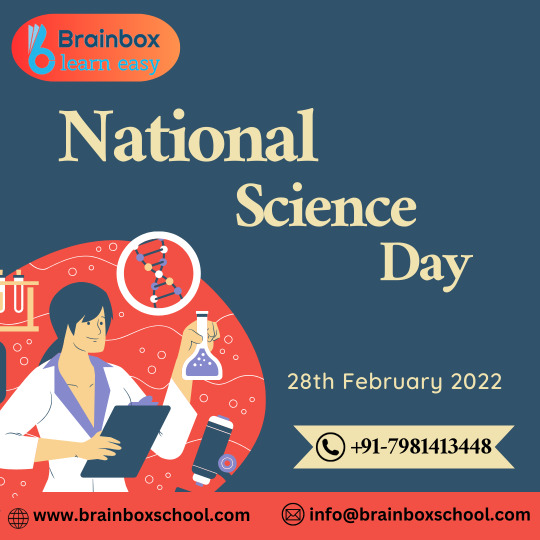
🌟 Happy National Science Day! 🌟
Today, we celebrate the marvels of science that shape our world and propel humanity forward. From groundbreaking discoveries to technological innovations, science fuels progress and inspires curiosity.
On this day in 1928, the renowned physicist Sir C.V. Raman discovered the Raman Effect, a phenomenon that revolutionized the way we understand light and matter. 🎉
Let's honor the spirit of inquiry and discovery that drives scientists everywhere. Whether it's unlocking the mysteries of the universe, finding solutions to pressing global challenges, or improving everyday life, science touches us all.
Join us in celebrating NationalScienceDay and let's continue to explore, innovate, and make the world a better place through the power of science!
#NationalScienceDay#ScienceDay#ScienceAndInnovation#CelebratingScience#Discoveries#Curiosity#STEM#ScienceIsFun#RamanEffect#ScienceCommunity#ScientificDiscovery#Innovations
2 notes
·
View notes
Text
Analysis of: "From Brain to AI and Back" (academic lecture by Ambuj Singh)
youtube
The term "document" in the following text refers to the video's subtitles.
Here is a summary of the key discussions:
The document describes advances in using brain signal recordings (fMRI) and machine learning to reconstruct images viewed by subjects.
Challenges include sparseness of data due to difficulties and costs of collecting extensive neural recordings from many subjects.
Researchers are working to develop robust models that can generalize reconstruction capabilities to new subjects with less extensive training data.
Applications in medical diagnosis and lie detection are possibilities, but risks of misuse and overpromising on capabilities must be carefully considered.
The genre of the document is an academic lecture presenting cutting-edge neuroscience and AI research progress to an informed audience.
Technical content is clearly explained at an advanced level with representative examples and discussion of challenges.
Ethical implications around informed consent, privacy, and dual-use concerns are acknowledged without overstating current capabilities.
While more information is needed, the presentation style and framing of topics skews towards empirical science over opinion or fiction.
A wide range of stakeholders stand to be impacted, so responsible development and governance of emerging neural technologies should involve multidisciplinary input.
Advancing both basic scientific understanding and more human-like machine learning is a long-term motivation driving continued innovation in this important field.
Here is a summary of the key points from the document:
The speaker discusses advances in using brain signal recordings (fMRI) to reconstruct images that a person is viewing by training AI/machine learning models.
An example is shown where the top row is the actual image viewed and the bottom row is the image reconstructed from the person's brain signals.
Larger datasets with brain recordings from multiple subjects are allowing better models to be developed that may generalize to new subjects.
Challenges include the sparseness of brain signal data due to the difficulty and costs of collecting it from many subjects.
A model is presented that maps brain signals to a joint embedding space of images and text, allowing reconstruction of novel images from new brain signals.
Examples are shown where the reconstructed images match fairly well or not as well depending on image details and semantics.
Issues around ethics, risks of misuse, and questions of explaining and improving the models are discussed.
Ongoing work aims to address challenges around transferring models between subjects and measuring reconstruction performance.
Based on the content and style of the document, it appears to be an academic lecture or presentation.
Key evidence points include:
The document consists primarily of a speaker talking and presenting slides/examples to an audience, as indicated by phrases like "Let me just start with this" and an applause at the end.
Technical topics from neuroscience and machine learning/AI are discussed in detail, such as fMRI brain recordings, reconstructing images from brain signals, modeling approaches, dataset descriptions, and challenges/questions in the field.
Academic concepts like human subjects studies, building models, transferring learning, and measuring performance are referred to.
The presentation of information is intended to educate the audience on the state of the field and cuttting edge research, not just entertain.
There are no narratives, characters or creative storytelling elements - it adheres strictly to explaining complex technical content.
Therefore, based on the instructive/educational style and focus on explaining advanced technical research, I would classify the genre of this document as an academic lecture/presentation intended to inform an audience about progress in the domain of neuroscience and artificial intelligence.
Here are some of the key stakeholders that could be affected by the content and topics discussed in this document:
Neuroscience researchers - Directly interested and impacted by advances reported from their field of study. Progress informs future research directions.
AI/machine learning researchers - Models and challenges discussed could inspire new research at the intersection of AI and neuroscience. Transfer of model techniques.
Medical/clinical communities - Potential applications to diagnosis, personalized medicine if models can accurately reconstruct brain states. Raises ethical issues.
Government research agencies - Fund future related research based on understanding of opportunities and challenges conveyed. Evaluates societal impacts.
General public - Increased understanding of science helps engagement but topics like brain reading raise public concerns around privacy, consent if translated beyond research.
Research participants - Summary does not disclose identities but motivates others to contribute data for progress. Well-being depends on responsible use of data.
Technology companies - Commercial opportunities from real-world applications but also reputational risks if misused. Data ownership questions.
Academic institutions - Collaborations, education of next generations of researchers on cutting-edge topics is enabled through open dissemination of knowledge.
Overall the document provides value to a wide range of stakeholders by communicating the state and potential implications of this multidisciplinary area of neuroscience and AI research. Responsible stewardship is important given several ethical considerations.
Here is a summary of the key points about advances in using brain signal recordings from the document:
Researchers are using fMRI to record brain signals as people view images, in order to reconstruct the viewed images from the brain activity patterns alone.
Machine learning models, especially neural networks, are allowing researchers to train mappings from brain signals to representations of semantic content like images and text.
Examples show the capability of reconstructing fairly accurate images that a person viewed, based solely on their brain activity recordings during viewing.
Larger datasets with multiple subjects are important to develop models that may generalize beyond individual subjects. However, fMRI data is very difficult and expensive to collect at scale.
Advances now allow reconstruction of more complex stimuli like full stories a person reads, not just static images.
Ongoing work aims to better understand brain learning processes and apply those principles to more human-like machine learning architectures.
Analyzing brain recordings also has potential applications for medical diagnosis, lie detection, personalized medicine as models improve.
Ethics must be carefully considered to ensure technologies for reading neural signals are developed and applied responsibly and avoid misuse or privacy violations.
So in summary, the document outlines significant progress using machine learning on brain recordings to reconstruct sensory experiences, with applications and open questions that can further both neuroscience and AI.
Here is a summary of the key points about the sparseness of brain signal data:
Collecting fMRI brain signal recordings from large numbers of subjects is extremely challenging and costly due to the resources and time required.
Each recording session with a single subject takes considerable time, as the number of images/stimuli that can be presented is limited within a session.
Collecting data from a single subject sufficient for training complex models may require recording sessions over multiple days or weeks.
As a result, publicly available datasets typically contain recordings from only a small number of subjects, often under 10.
The sparseness of data makes it difficult to develop robust models that will generalize well to new subjects that lack extensive recordings.
Researchers aim to better leverage smaller datasets by training models that can reconstruct novel stimuli from just a subset of training data per subject.
If successful, this could enable more efficient data collection, such as obtaining usable models from a subject after a single shorter session rather than many long sessions.
However, overcoming the sparseness of brain signal data remains a major challenge holding back progress in the field. Larger collaborative datasets are needed.
So in summary, sparse data severely limits progress but also motivates techniques to optimize learning from limited samples per subject.
Here is a summary of key points regarding risks of misuse from the document:
Advances in reconstructing cognitive states like images viewed from brain recordings raise potential dual-use concerns if technologies are not regulated.
Applications in medical diagnosis and lie detection could help many, but lead to issues if used without consent or for non-medical surveillance.
Overly ambitious claims about capabilities need to be avoided to prevent misleading expectations that could fuel inappropriate usage assumptions.
Privacy and security of sensitive neural data must be prioritized to prevent potential misuse for profiling, identification or manipulation without oversight.
Commercial pressures may incentivize premature deployment before understanding implications, so continued research is important.
Public education about limitations and complexities involved can help curb fears that fuel misuse if capabilities are overestimated.
Multidisciplinary cooperation ensures societal and ethical issues are considered proactively rather than reactively addressed later.
Governance frameworks may be needed to steer applications toward public benefit rather individual or state abuse of personal mental information.
The speaker acknowledges misuse risks to inform discussion and underscore the importance of ongoing examination of new neural technologies through multidisciplinary lens including ethics.
Based on the content and style of presentation, my evaluation of the document status is:
Science vs Fiction: Clearly grounded in science as it discusses ongoing empirical research studies using neuroimaging and machine learning techniques. No fictional or hypothetical elements.
Empirical vs Anecdotal: Empirical in nature, rooted in dataset collection from human subjects and quantitative modeling/evaluation, not personal experience. While data quantities are limited, research follows scientific method.
Fact vs Opinion: Primarily presents technical details and research findings as established facts from the literature. Does not advance strong personal opinions beyond realistic discussion of challenges. Maintains an objective tone.
Objective vs Subjective: Remains objective in explaining research accomplishments and questions objectively without emotive language or bias. Any subjective experience like dataset limitations are clearly labeled as such. Presentation aims for factual information transfer.
In summary, while farther research is still ongoing, the document presents the current state of a scientific research domain factually based on empirical evidence and quantitative analysis published in the field. It does not intermingle non-factual elements or stray from an objective reporting of the topic at hand. The status therefore skews heavily toward science, empiricism, fact and objectivity.
I did not identify any logical fallacies in the content or arguments presented in this document.
The speaker objectively summarizes established research results and proposals, without making assertions that require logical scrutiny.
Some key reasons why logical fallacies are not present include:
No causal claims are made without proper evidence or empirical support from published studies. Progress is tied to concrete research efforts.
No arguments are constructed through flawed reasoning or non sequiturs. Concepts are explained clearly and build upon each other logically.
Comparisons to other approaches are fair without strawman misrepresentations of opposing ideas. Related work is acknowledged.
Limitations and open challenges are candidly outlined rather than ignored or obscured through fallacious defense.
No emotional, exaggerated or politically motivated language is used that could constitute emotional appeals. Tone remains factual.
No false dilemmas or false attributions of complexity are presented. Discussions appropriately scope multi-factor research questions.
No hasty generalizations are made from limited evidence. Data constraints are clearly communicated.
Overall, through objectively summarizing established neuroscience and AI research domains and techniques, without engaging in argument or debate, I did not find any logical fallacies employed in this academic information-sharing document. The focus appears to be factual reporting of progress and issues, avoiding fallacious reasoning.
Here is an evaluation of the ethics addressed and considered in the document:
Informed consent is implied but not explicitly discussed for research participants. Given the sensitivity of brain data, proper protocols were likely followed.
Privacy and anonymity of participants is a concern, but cannot be fully assessed without more details on the dataset and review process.
Potential dual-use issues around brain reading/reconstruction technologies are identifed by discussing applications but also worries about misuse or lack of oversight. This shows awareness of ethical implications.
Limitations and challenges and openly discussed, avoiding overpromising on capabilities. This establishes credibility and sets appropriate expectations.
Societal impacts and usage beyond research (e.g. diagnostics) are flagged as requiring careful consideration of risks like surveillance, discrimination if not regulated properly.
No claims are made without empirical evidence, showing results are driven by facts rather than desires which can bias judgment. Objectivity helps ethical analysis.
Multidisciplinary collaboration is emphasized , suggesting diverse viewpoints were incorporated into the research process.
Overall, while full review details are not provided, the document demonstrates an awareness of important ethical considerations around privacy, consent and responsible development for these sensitive types of neural data and technologies. A balanced assessment of opportunities and risks is conveyed.
Here are the usual evaluation criteria for an academic lecture/presentation genre and my evaluation of this document based on each criteria:
Clarity of explanation: The concepts and technical details are explained clearly without jargon. Examples enhance understanding. Overall the content is presented in a clear, logical manner.
Depth of technical knowledge: The speaker demonstrates thorough expertise and up-to-date knowledge of the neuroscience and AI topics discussed, including datasets, modeling approaches, challenges and future directions.
Organization of information: The presentation flows in a logical sequence, with intro/overview, detailed examples, related work, challenges/future work. Concepts build upon each other well.
Engagement of audience: While an oral delivery is missing, the document seeks to engage the audience through rhetorical questions, previews/reviews of upcoming points. Visuals would enhance engagement if available.
Persuasiveness of argument: A compelling case is made for the value and progress of this important multidisciplinary research area. Challenges are realistically discussed alongside accomplishments.
Timeliness and relevance: This is a cutting-edge topic at the forefront of neuroscience and AI. Advances have clear implications for the fields and wider society.
Overall, based on the evaluation criteria for an academic lecture, this document demonstrates strong technical expertise, clear explanations, logical organization and timely relevance to communicate progress in the domain effectively to an informed audience. Some engagement could be further enhanced with accompanying visual/oral presentation.
mjsMlb20fS2YW1b9lqnN
#Neuroscience#Brainimaging#Neurotechnology#FMRI#Neuroethics#BrainComputerInterfaces#AIethics#MachineLearning#NeuralNetworks#DeepLearning#DataPrivacy#InformationSecurity#DigitalHealth#MentalHealth#Diagnostics#PersonalizedMedicine#DualUseTech#ResearchEthics#ScienceCommunication#Interdisciplinary#Policymaking#Regulation#ResponsibleInnovation#Healthcare#Education#InformedConsent#Youtube
2 notes
·
View notes
Text



Discovering Einstein's Desk After His Death What It Tells Us About His Lasting Impact
#Einstein#scientist#innovator#discovery#legacy#history#scientifichistory#desk#office#science#sciencefacts#sciencecommunity
2 notes
·
View notes
Text
🩺📄 The Unsung Heroes of Healthcare: Medical Writers Are Powering a Billion-Dollar Market Boom 📄🩺
In a world where every word matters—especially when it comes to human health—medical writing is emerging as one of the most powerful tools in the healthcare industry. And spoiler alert: it’s a market on the rise. 📈
💊 The latest Medical Writing Market report dishes out everything you need to know:
📚 Market size, share, and future growth trends
💡 The tech innovations transforming how we communicate medical science
📉 The hurdles (hello, COVID-19) and how key players are leaping over them
💼 Strategic moves by top companies shaping the competitive battlefield
🧬 Meet the Word Wizards Leading the Way:
IQVIA
Parexel
Trilogy Writing & Consulting
Covance
OMICS International
Freyr Solutions
🧩 Segmented by Writing Type:
Clinical Writing
Regulatory Writing
Scientific Writing
Others (because yes, there’s more!)
🎯 Where the Magic Happens (Applications):
Medical Journalism
Medical Education
Medico Marketing
Others (a.k.a. the silent powerhouse sectors)
🌍 From the lab bench to the policy desk, medical writers are bridging gaps, translating breakthroughs, and pushing boundaries—all while driving a global market forward.
🔎 Explore the full story here: 👉 https://www.businessresearchinsights.com/market-reports/medical-writing-market-122916
#MedicalWriting#HealthcareInnovation#ScienceCommunication#RegulatoryWriting#ClinicalTrials#MedicalEducation#MarketTrends 🧠💼🖋️
0 notes
Video
youtube
Discovering Hidden Dolphin Habitats! #sciencefather #researchawards #scientist #coastal
🌊🔍 In an exciting breakthrough, researchers have uncovered an unexpected habitat hotspot for the well-studied Indo-Pacific humpback dolphins (Sousa chinensis) 🐬 by integrating real-time acoustic 📡 and visual 👀 surveys. This innovative approach allowed scientists to detect and monitor dolphin presence in areas previously overlooked, shedding light on their habitat use and behavior in dynamic coastal ecosystems 🌅. By combining sound recordings with direct observations, the study not only enhances our understanding of these charismatic marine mammals 🐬 but also highlights the importance of adopting multi-method monitoring strategies to inform conservation efforts 🌿🤝. This discovery underscores the hidden complexities of dolphin ecology and the value of continuous exploration and technology-driven research in protecting vulnerable species 💙🌍.
Natural Scientist Awards
Nomination Link: https://naturalscientist.org/award-nomination/?ecategory=Awards&rcategory=Awardee
Visit Our Website 🌐naturalscientist.org
Contact us [email protected]
Get Connected Here:
LinkedIn: https://www.linkedin.com/in/natural-scientist-466a56357/
Blogger: https://naturalaward.blogspot.com/
Instagram: https://www.instagram.com/natural_scientist/
Pinterest: https://in.pinterest.com/research2805/_profile/
Youtube: https://www.youtube.com/@NaturalScientistAwards
Facebook: https://www.facebook.com/profile.php?id=61574191899176
#youtube#sciencefather#naturalscientistawards#researchawards#dolphin#humpback#marinebiology#oceanconservation#research#acoustic#visual#marinemammals#wildlifemonitoring#coastal#marineecology#biodiversity#savetheocean#conservation#marinewildlife#marinebiologist#wildliferesearch#fieldresearch#oceanresearch#marine#scientist#monitoring#habitat#sciencecommunication#researcherawards
0 notes
Text
DAY 1
#Day1 on the journey to my dream of sharing science with the world. Let’s do this! 🚀🔬
#ScienceCommunication#ScienceForEveryone#LearningScience#ScientificDreams#CuriosityHasNoLimits#FirstSteps#ExploringTheWorld#ScienceIsLife#SharingKnowledge#KnowledgeMatters#day 1#science
0 notes
Text


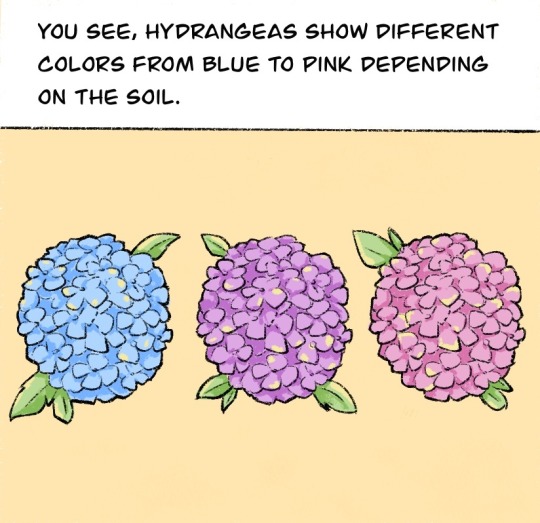






Why do we have blue, pink and purple hydrangea? The answer is in the soil!
#sciart#cute illustration#sciencecommunication#gardening#biology#web comic#science#cute comics#chemistry#flowers#stem education#studyblr
881 notes
·
View notes
Text
Evolution of Animals – The Elephant 🐘 From small, semi-aquatic mammals to Earth's largest land animals, elephants represent a stunning journey through time. One lineage. Millions of years. Still evolving. A testament to nature’s power to adapt, diversify, and endure.
#Evolution#AnimalEvolution#Elephants#Wildlife#Nature#Biodiversity#Zoology#Paleontology#Science#ScienceCommunication#SciComm#NaturalHistory#WildlifeConservation#ExtinctAnimals#PrehistoricLife#AncientAnimals#Adaptation#SurvivalOfTheFittest#EvolutionInAction#EarthHistory#LifeOnEarth#Mammals#Megafauna#Species#EcoEducation#ScienceFacts#AnimalFacts#Conservation#ScientificDiscovery#Ecosystems
13 notes
·
View notes
Text

昨年5月から受講していた北海道大学 CoSTEP 科学技術コミュニケーター養成プログラムの修了式で、札幌に行ってきました(なんとコースの最優秀賞を頂きました)。 海外でも活躍されているサイエンスイラストレーターの先生方から直接インフォグラフィッ���の添削をして頂いた秋の集中演習は、プロの凄みをこれでもかと体感した本当に刺激的な学びでしたし、全国各地でサイエンスコミュニケーションを志す年齢も背景もさまざまの方々と夜遅くまで議論に花を咲かせたことは、仲間とのつながりという得難い財産とともに、とても勇気づけられ励みを頂く経験になりました。先生方はじめみなさまには大変お世話になりました。 せっかく札幌に来たので、修了式翌日は北海道大学で野鳥の研究をしている同期の方にご案内頂く、北大構内のバードウォッチングツアーを有志で企画。北海道らしい鳥たちとともに(写真はアカゲラ Dendrocopos major)、エゾリスやミノムシの観察でも盛り上がるエクスカーションになりました。
#nature#natureguide#hokkaido#sapporo#CoSTEP#science#sciencecommunication#bird#animal#wildlife#naturephoto#natorephotography#winter#march#japan#woodpecker#Dendrocopos#Picidae#Piciformes
7 notes
·
View notes
Text
Do you like my after-version of this graphics?
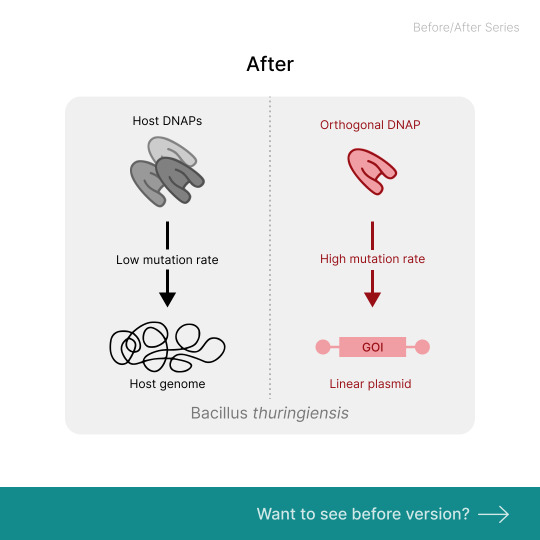
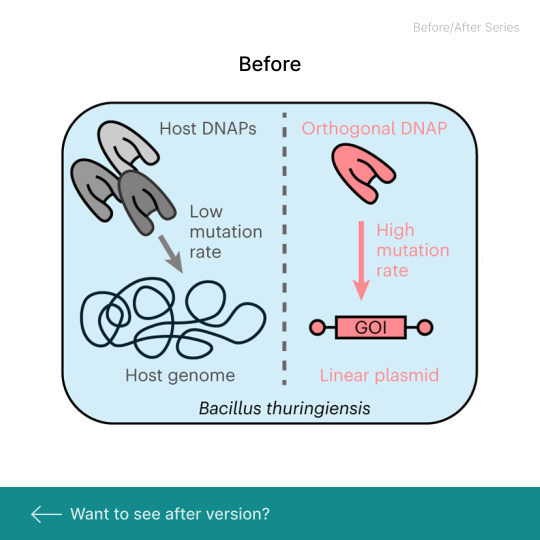
I came across this graphics in Nature Chemical Biology Journal.
I improved this graphics through following rules: ⭐Clarify the message ⭐Restructure the composition ⭐Simplify the components ⭐Create intentional color palettes ⭐Refine the text style
#ScienceGraphics#DataVisualization#ScientificCommunication#VisualAbstract#ResearchGraphics#SciArt#DataDesign#JournalFigures#ResearchVisualization#ScientificFigures#NatureChemicalBiology#GraphicDesignForScience#AcademicVisuals#ScienceCommunication#VisualScience
4 notes
·
View notes
Text
RNA Viruses Virology Short Essay Question And Answers
#MedicalVirology#ScienceCommunication#Virology#HealthEducation#RNAVirusesVirologyShortEssayQuestionAndAnswers
0 notes